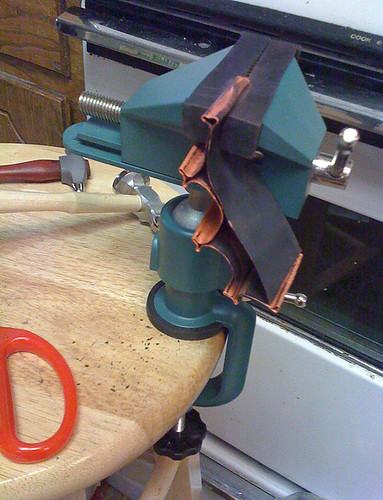
Here's an etched copper plate. I annealed it this afternoon and put it in a pickle of vinegar and salt. The black stuff is bits of black fire scale coming off the back of the plate. I annealed it face down so the back had the most scale. It's almost finished in the pickle. Next I rinse it, bath it in some baking soda water, rinse again, and clean it with 4 0 steel wool. Then it will be ready to cut with my disk cutter and I can dap it (dome it). After that I'll cut holes, antique it (or not), tumble it, and coat it with a permanent jewelry finish. I like the finish I choose to be trouble free for the customer so I almost always coat my copper. After that it will be assembled into jewelry.
I made a list one time of the steps I go through from beginning to end in the etching-to-jewelry process and there are 15 steps. Eight of the steps, maybe more, have multiple steps. Sometimes I skip some steps if I'm doing something different. It isn't always necessary to pickle items after annealing them. The fire scale can be attractive in some applications.
I love etched script and I found some wonderful script stamps at the Heirloom Productions rubber stamp show in Grapevine Texas last month. I also got some really cool stamps at one of my favorite vendors, Lost Coast Designs. I'm going to be using them soon.
One of my new projects is etched light switch plates. I have some copper and brass switch plates and will be experimenting with them.


